An Adaptive TE-PV Hybrid Energy Harvesting System for Self-Powered IoT Sensor Applications
Abstract
1. Introduction
2. EH System for WSNs
2.1. Ambient Energy Sources
2.2. Solar Energy Harvesting System
2.3. Thermal Energy Harvesting System
3. Proposed Hybrid Energy Harvesting System (HEHS)
4. Experimental Setup and Methodology
Prototype Design
5. Results and Discussion
6. Conclusions
Author Contributions
Funding
Institutional Review Board Statement
Informed Consent Statement
Data Availability Statement
Acknowledgments
Conflicts of Interest
References
- Ünlü, F.; Wawrla, L.; Dìaz, A. Energy Harvesting Technologies for IoT Edge Devices; Energy Efficient End-use Equipment International Energy Agency: Paris, France, 2018. [Google Scholar]
- Morgan, J. A Simple Explanation Of “The Internet of Things”. Available online: https://www.forbes.com/sites/jacobmorgan/2014/05/13/simple-explanation-internet-things-that-anyone-can-understand/#23a45c0e1d09 (accessed on 20 December 2020).
- Babar, M.; Rahman, A.; Arif, F.; Jeon, G. Energy-harvesting based on internet of things and big data analytics for smart health monitoring. Sustain. Comput. Inform. Syst. 2018, 20, 155–164. [Google Scholar] [CrossRef]
- Akan, O.B.; Cetinkaya, O.; Koca, C.; Ozger, M. Internet of Hybrid Energy Harvesting Things. IEEE Internet Things J. 2018, 5, 736–746. [Google Scholar] [CrossRef]
- Kortuem, G.; Kawsar, F.; Sundramoorthy, V.; Fitton, D. Smart objects as building blocks for the internet of things. IEEE Internet Comput. 2010, 14, 44–51. [Google Scholar] [CrossRef]
- Newell, D.; Duffy, M. Review of Power Conversion and Energy Management for Low-Power, Low-Voltage Energy Harvesting Powered Wireless Sensors. IEEE Trans. Power Electron. 2019, 34, 9794–9805. [Google Scholar] [CrossRef]
- Hudak, N.S.; Amatucci, G.G. Small-scale energy harvesting through thermoelectric, vibration, and radiofrequency power conversion. J. Appl. Phys. 2008, 103, 5. [Google Scholar] [CrossRef]
- Glynne-Jones, P.; Tudor, M.J.; Beeby, S.P.; White, N.M. An electromagnetic, vibration-powered generator for intelligent sensor systems. Sens. Actuators A Phys. 2004, 110, 344–349. [Google Scholar] [CrossRef]
- Dondi, D.; Bertacchini, A.; Brunelli, D.; Larcher, L.; Benini, L. Modeling and optimization of a solar energy harvester system for self-powered wireless sensor networks. IEEE Trans. Ind. Electron. 2008, 55, 2759–2766. [Google Scholar] [CrossRef]
- Kim, R.-Y.; Lai, J.-S.; York, B.; Koran, A. Analysis and design of maximum power point tracking scheme for thermoelectric battery energy storage system. IEEE Trans. Ind. Electron. 2009, 56, 3709–3716. [Google Scholar]
- Bhandari, B.; Lee, K.T.; Lee, G.Y.; Cho, Y.M.; Ahn, S.H. Optimization of hybrid renewable energy power systems: A review. Int. J. Precis. Eng. Manuf. Green Technol. 2015, 2, 99–112. [Google Scholar] [CrossRef]
- Tadesse, Y.; Zhang, S.; Priya, S. Multimodal energy harvesting system: Piezoelectric and electromagnetic. J. Intell. Mater. Syst. Struct. 2009, 20, 625–632. [Google Scholar] [CrossRef]
- Guilar, N.J.; Kleeburg, T.J.; Chen, A.; Yankelevich, D.R.; Amirtharajah, R. Integrated solar energy harvesting and storage. IEEE Trans. Very Large Scale Integr. Syst. 2009, 17, 627–637. [Google Scholar] [CrossRef]
- Lhermet, H.; Condemine, C.; Plissonnier, M.; Salot, R.; Audebert, P.; Rosset, M. Efficient power management circuit: From thermal energy harvesting to above-IC microbattery energy storage. IEEE J. Solid State Circuits 2008, 43, 246–255. [Google Scholar] [CrossRef]
- Tan, Y.K.; Panda, S.K. Energy harvesting from hybrid indoor ambient light and thermal energy sources for enhanced performance of wireless sensor nodes. IEEE Trans. Ind. Electron. 2011, 58, 4424–4435. [Google Scholar] [CrossRef]
- Carli, D.; Brunelli, D.; Benini, L.; Ruggeri, M. An effective multi-source energy harvester for low power applications. In Proceedings of the Design, Automation and Test in Europe, DATE, Grenoble, France, 14–18 March 2011; pp. 836–841. [Google Scholar]
- Colomer-Farrarons, J.; Miribel-Català, P.; Saiz-Vela, A.; Samitier, J. A multiharvested self-powered system in a low-voltage low-power technology. IEEE Trans. Ind. Electron. 2011, 58, 4250–4263. [Google Scholar] [CrossRef]
- Bandyopadhyay, S.; Chandrakasan, A.P. Platform architecture for solar, thermal, and vibration energy combining with MPPT and single inductor. IEEE J. Solid-State Circuits 2012, 47, 2199–2215. [Google Scholar] [CrossRef]
- Li, H.; Zhang, G.; Ma, R.; You, Z. Design and experimental evaluation on an advanced multisource energy harvesting system for wireless sensor nodes. Sci. World J. 2014, 2014, 671280. [Google Scholar] [CrossRef]
- Vankecke, C.; Assouère, L.; Wang, A.; Durand-Estèbe, P.; Caignet, F.; Dilhac, J.-M.; Bafleur, M. Multisource and battery-free energy harvesting architecture for aeronautics applications. IEEE Trans. Power Electron. 2015, 30, 3215–3227. [Google Scholar] [CrossRef]
- Dini, M.; Romani, A.; Filippi, M.; Bottarel, V.; Ricotti, G.; Tartagni, M. A nanocurrent power management IC for multiple heterogeneous energy harvesting sources. IEEE Trans. Power Electron. 2015, 30, 5665–5680. [Google Scholar] [CrossRef]
- Chowdary, G.; Singh, A.; Chatterjee, S. An 18 nA, 87% Efficient Solar, Vibration and RF Energy-Harvesting Power Management System with a Single Shared Inductor. IEEE J. Solid State Circuits 2016, 51, 2501–2513. [Google Scholar] [CrossRef]
- Madakam, S.; Lake, V.; Lake, V.; Lake, V. Internet of Things (IoT): A literature review. J. Comput. Commun. 2015, 3, 164. [Google Scholar] [CrossRef]
- Mishu, M.K.; Rokonuzzaman, M.; Pasupuleti, J.; Shakeri, M.; Rahman, K.S.; Hamid, F.A.; Tiong, S.K.; Amin, N. Prospective efficient ambient energy harvesting sources for iot-equipped sensor applications. Electronics 2020, 9, 1345. [Google Scholar] [CrossRef]
- Alsharif, M.H.; Kim, S.; Kuruoğlu, N. Energy Harvesting Techniques for Wireless Sensor Networks/Radio-Frequency Identification: A Review. Symmetry 2019, 11, 865. [Google Scholar] [CrossRef]
- International Renewable Energy Agency (IRENA). Renewable Energy Statistics 2019 Statistiques D’Énergie Renouvelable 2019 Estadísticas De Energía; International Renewable Energy Agency: Abu Dhabi, United Arab Emirates, 2019; ISBN 9789292601379. [Google Scholar]
- Adu-Manu, K.S.; Adam, N.; Tapparello, C.; Ayatollahi, H.; Heinzelman, W. Energy-harvesting wireless sensor networks (EH-WSNs): A review. ACM Trans. Sens. Netw. 2018, 14, 1–50. [Google Scholar] [CrossRef]
- Garg, N.; Garg, R. Energy harvesting in IoT devices: A survey. In Proceedings of the 2017 International Conference on Intelligent Sustainable Systems (ICISS), Palladam, India, 7–8 December 2017; pp. 127–131. [Google Scholar]
- Dargie, W. Principles and Applications of Ubiquitous Sensing, 1st ed.; John Wiley & Sons, Ltd.: Hoboken, NJ, USA, 2017. [Google Scholar]
- Sharma, H.; Haque, A.; Jaffery, Z.A. Modeling and optimisation of a solar energy harvesting system for wireless sensor network nodes. J. Sens. Actuator Netw. 2018, 7, 40. [Google Scholar] [CrossRef]
- Al-Majidi, S.D.; Abbod, M.F.; Al-Raweshidy, H.S. A novel maximum power point tracking technique based on fuzzy logic for photovoltaic systems. Int. J. Hydrogen Energy 2018, 43, 14158–14171. [Google Scholar] [CrossRef]
- Dixit, T.V.; Yadav, A.; Gupta, S. Experimental assessment of maximum power extraction from solar panel with different converter topologies. Int. Trans. Electr. Energy Syst. 2019, 29, 1–33. [Google Scholar] [CrossRef]
- Fawzy El-Khatib, M.; Shaaban, S.; Abu El-Sebah, M.I. A proposed advanced maximum power point tracking control for a photovoltaic-solar pump system. Sol. Energy 2017, 158, 321–331. [Google Scholar] [CrossRef]
- Rokonuzzaman, M.; Shakeri, M.; Hamid, F.A.; Mishu, M.K.; Pasupuleti, J.; Rahman, K.S.; Tiong, S.K.; Amin, N. Iot-enabled high efficiency smart solar charge controller with maximum power point tracking—Design, hardware implementation and performance testing. Electronics 2020, 9, 1267. [Google Scholar] [CrossRef]
- Selvan, K.V.; Mohamed Ali, M.S. Micro-scale energy harvesting devices: Review of methodological performances in the last decade. Renew. Sustain. Energy Rev. 2016, 54, 1035–1047. [Google Scholar] [CrossRef]
- Kobbekaduwa, K.P.V.B.; Subasinghe, N.D. Modelling and Analysis of Thermoelectric Generation of Materials Using Matlab/Simulink. Int. J. Energy Power Eng. 2016, 5, 97. [Google Scholar] [CrossRef][Green Version]
- Dalala, Z.M.; Saadeh, O.; Bdour, M.; Zahid, Z.U. A new maximum power point tracking (MPPT) algorithm for thermoelectric generators with reduced voltage sensors count control. Energies 2018, 11, 1826. [Google Scholar] [CrossRef]
- Shirvanimoghaddam, M.; Shirvanimoghaddam, K.; Abolhasani, M.M.; Farhangi, M.; Zahiri Barsari, V.; Liu, H.; Dohler, M.; Naebe, M. Towards a Green and Self-Powered Internet of Things Using Piezoelectric Energy Harvesting. IEEE Access 2019, 7, 94533–94556. [Google Scholar] [CrossRef]
- Khare, V.; Nema, S.; Baredar, P. Solar-wind hybrid renewable energy system: A review. Renew. Sustain. Energy Rev. 2016, 58, 23–33. [Google Scholar] [CrossRef]
- Khan, M.A.M.; Rehman, S.; Al-Sulaiman, F.A. A hybrid renewable energy system as a potential energy source for water desalination using reverse osmosis: A review. Renew. Sustain. Energy Rev. 2018, 97, 456–477. [Google Scholar] [CrossRef]
- Cetinkaya, O.; Akan, O.B. Electric-field energy harvesting in wireless networks. IEEE Wirel. Commun. 2017, 24, 34–41. [Google Scholar] [CrossRef]
- Ambrozkiewicz, B.; Litak, G.; Wolszczak, P. Modelling of electromagnetic energy harvester with rotational pendulum using mechanical vibrations to scavenge electrical energy. Appl. Sci. 2020, 10, 1–14. [Google Scholar]
- Jaziri, N.; Boughamoura, A.; Müller, J.; Mezghani, B.; Tounsi, F.; Ismail, M. A comprehensive review of Thermoelectric Generators: Technologies and common applications. Energy Rep. 2019, 6, 264–287. [Google Scholar] [CrossRef]
- Chandrasekaran, S.; Bowen, C.; Roscow, J.; Zhang, Y.; Dang, D.K.; Kim, E.J.; Misra, R.D.K.; Deng, L.; Chung, J.S.; Hur, S.H. Micro-scale to nano-scale generators for energy harvesting: Self powered piezoelectric, triboelectric and hybrid devices. Phys. Rep. 2019, 792, 1–33. [Google Scholar] [CrossRef]
- Carreon-Bautista, S.; Huang, L.; Sanchez-Sinencio, E.; Fellow, L. An Autonomous Energy Harvesting Power Management Unit with Digital Regulation for IoT Applications. IEEE J. Solid State Circuits 2016, 51, 1–18. [Google Scholar]
- Lashab, A.; Sera, D.; Guerrero, J.M.; Mathe, L.; Bouzid, A. Discrete model-predictive-control-based maximum power point tracking for PV systems: Overview and evaluation. IEEE Trans. Power Electron. 2017, 33, 7273–7287. [Google Scholar] [CrossRef]
- Suto, K.; Nishiyama, H.; Kato, N.; Kuri, T. Model predictive joint transmit power control for improving system availability in energy-harvesting wireless mesh networks. IEEE Commun. Lett. 2018, 22, 2112–2115. [Google Scholar] [CrossRef]
- Metry, M.; Shadmand, M.B.; Balog, R.S.; Abu-Rub, H. MPPT of photovoltaic systems using sensorless current-based model predictive control. IEEE Trans. Ind. Appl. 2016, 53, 1157–1167. [Google Scholar] [CrossRef]
- European Thermodynamics. Thermoelectric Generator Modules. Available online: https://www.europeanthermodynamics.com/products/thermoelectric-modules/seebeck-generator (accessed on 24 March 2021).
- Analog Devices. Ultralow Power Energy Harvester PMUs with MPPT and Charge Management; Analog Devices, Inc.: Norwood, MA, USA, 2017. [Google Scholar]
- Mois, G.; Folea, S.; Sanislav, T. Analysis of three IoT-based wireless sensors for environmental monitoring. IEEE Trans. Instrum. Meas. 2017, 66, 2056–2064. [Google Scholar] [CrossRef]
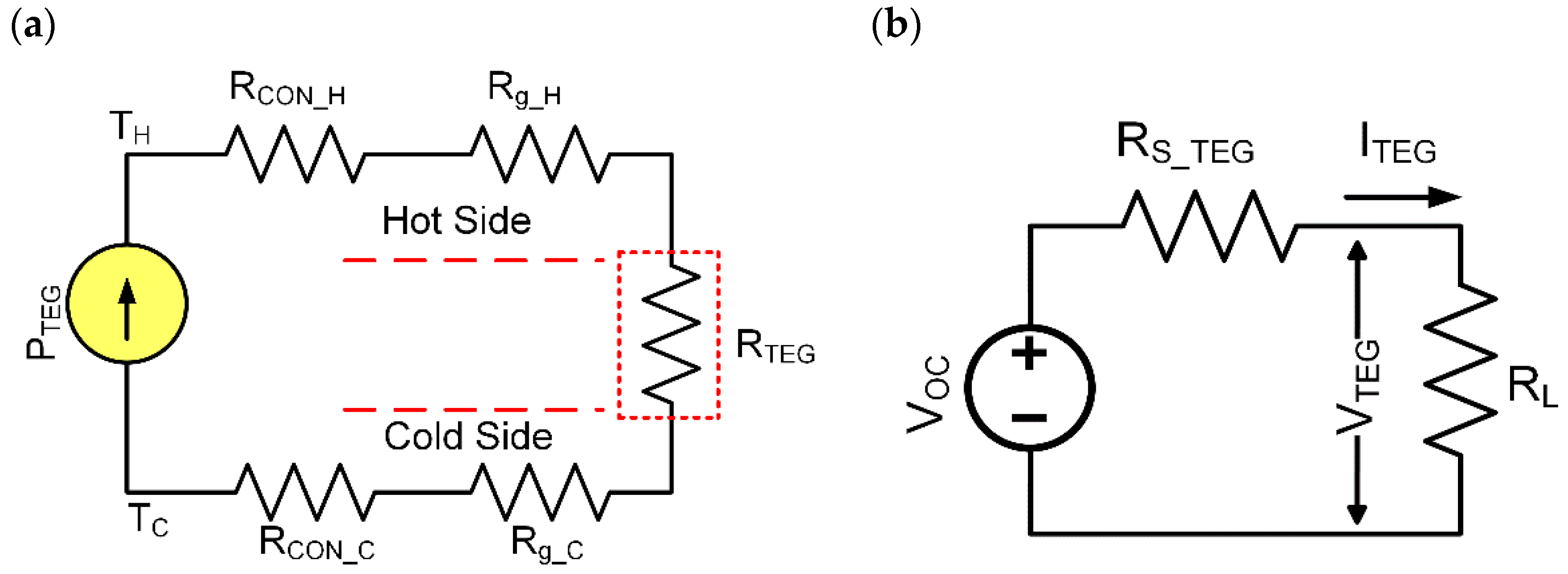
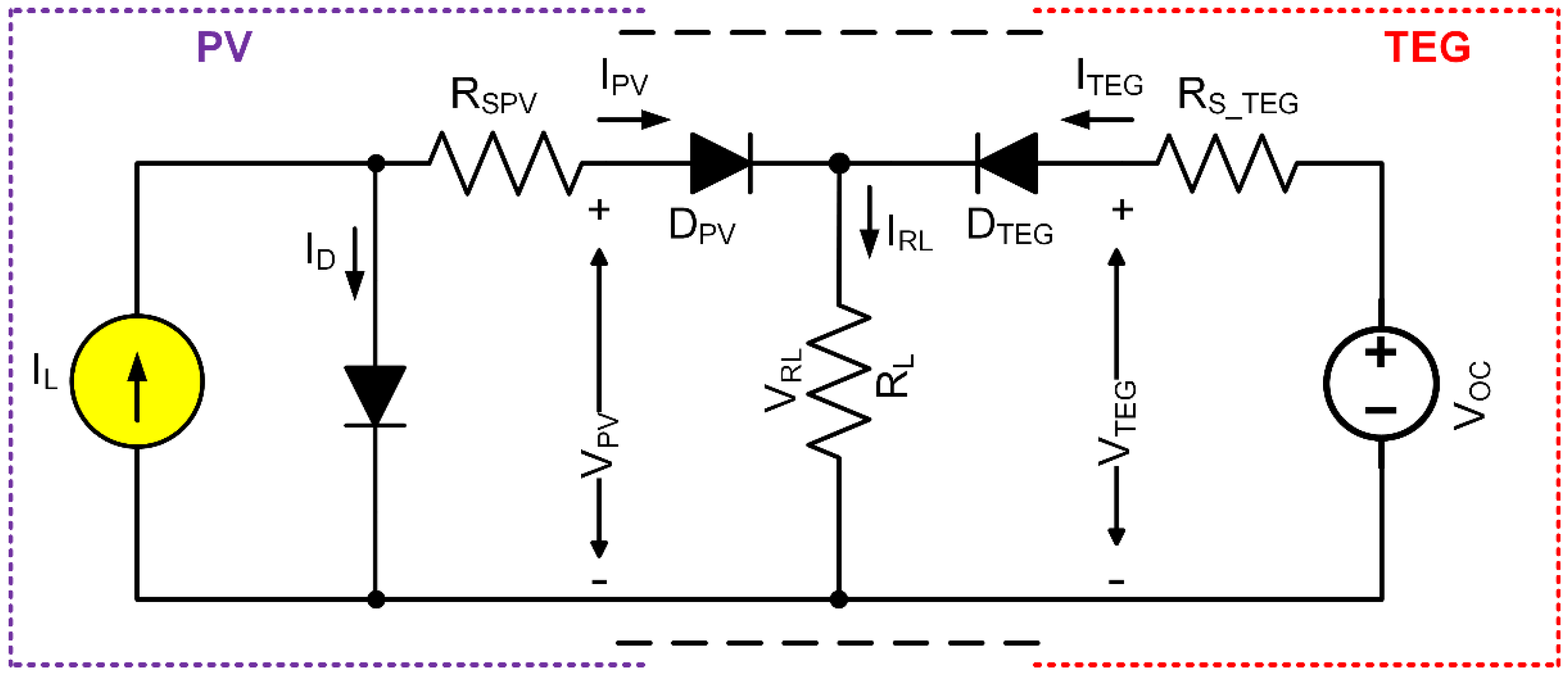

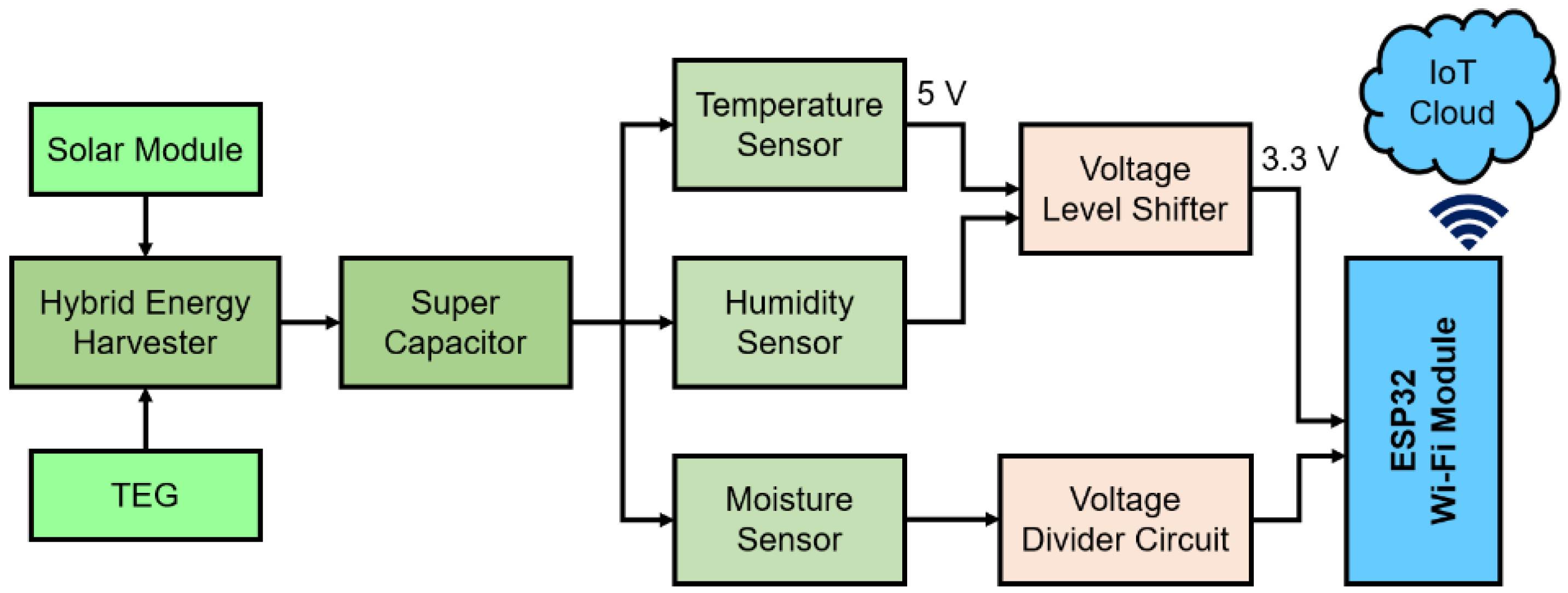
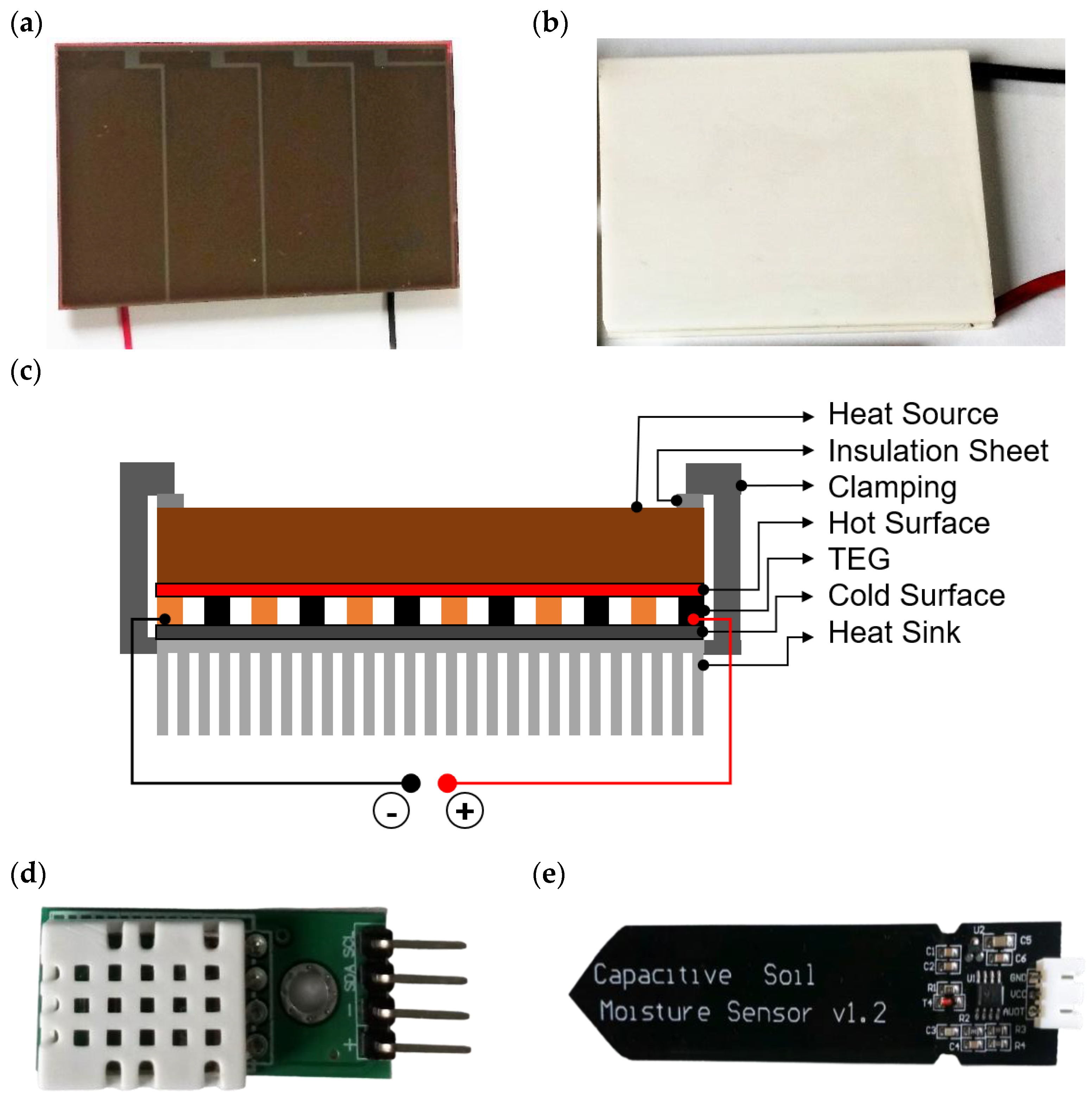

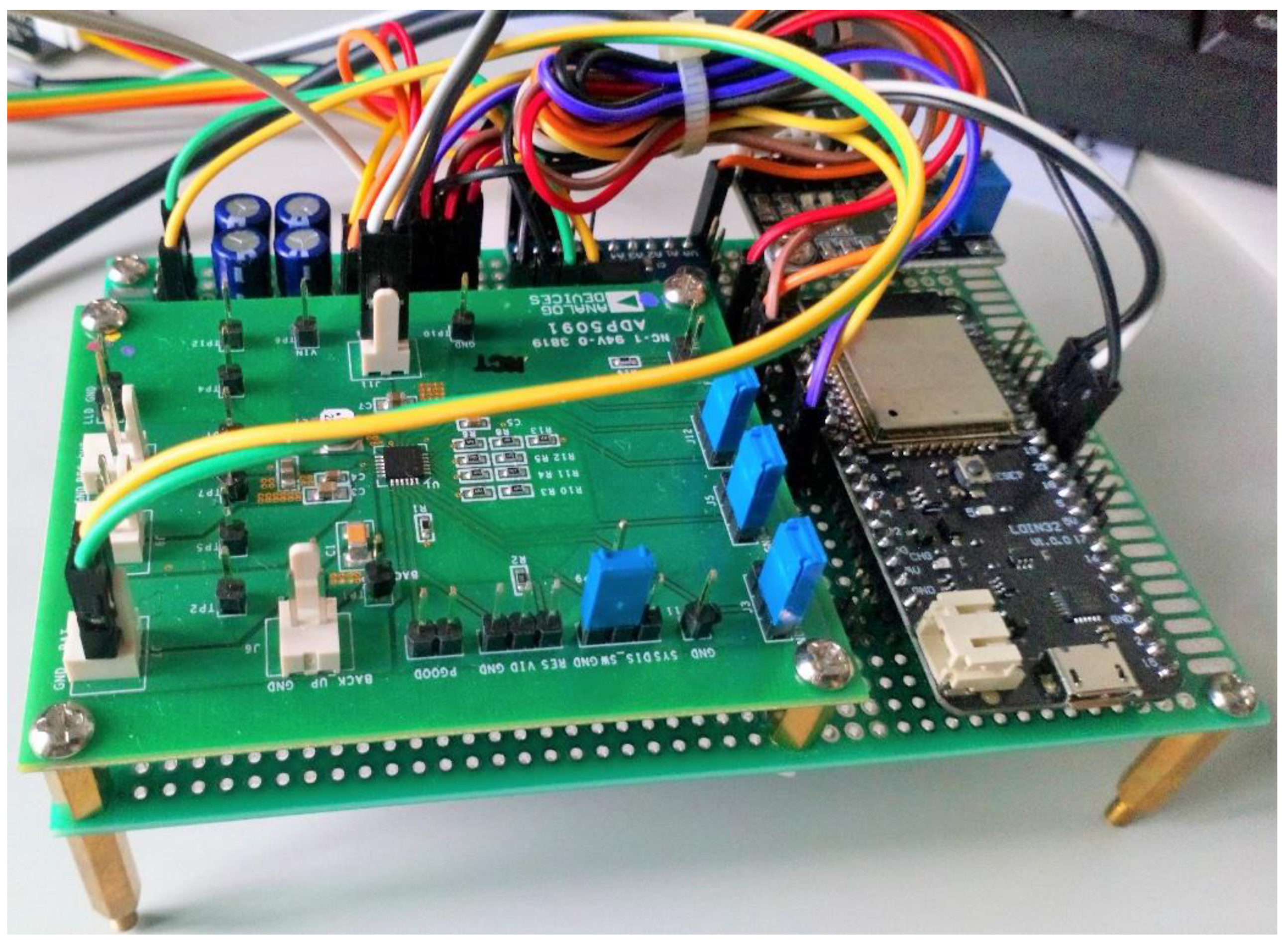
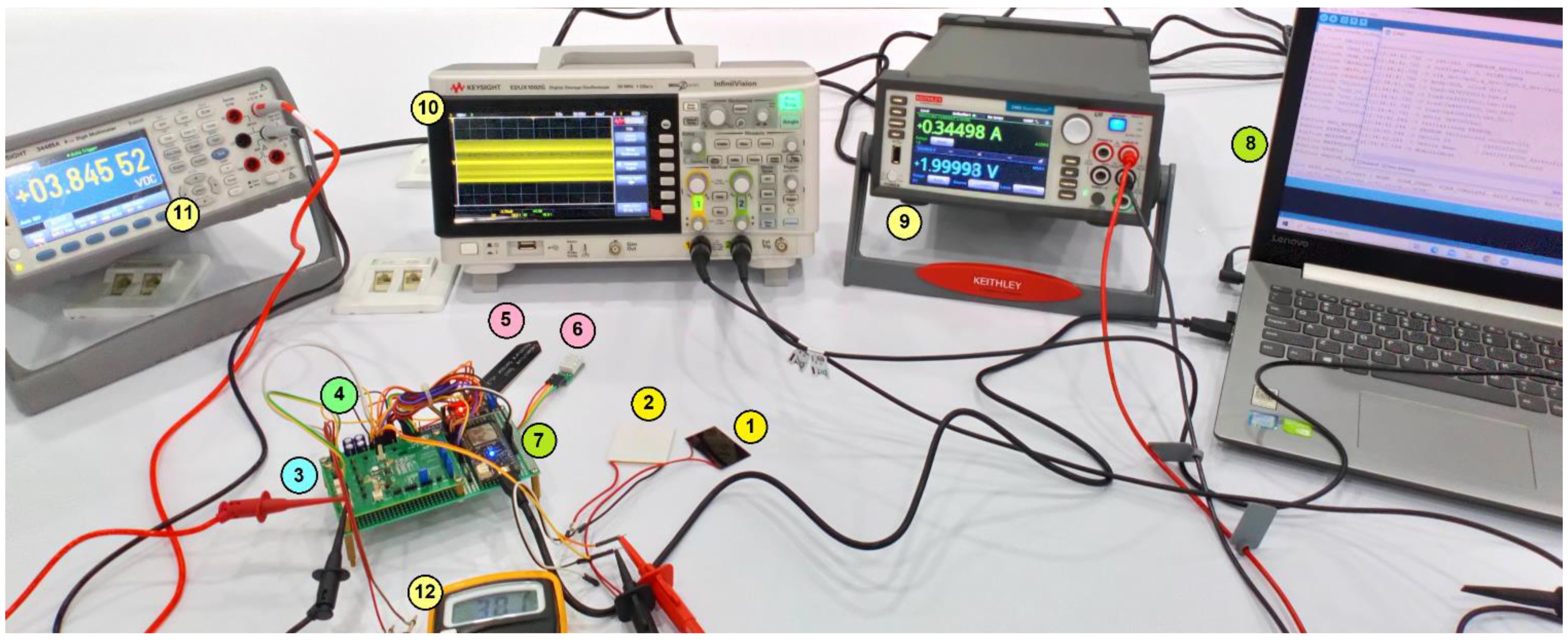
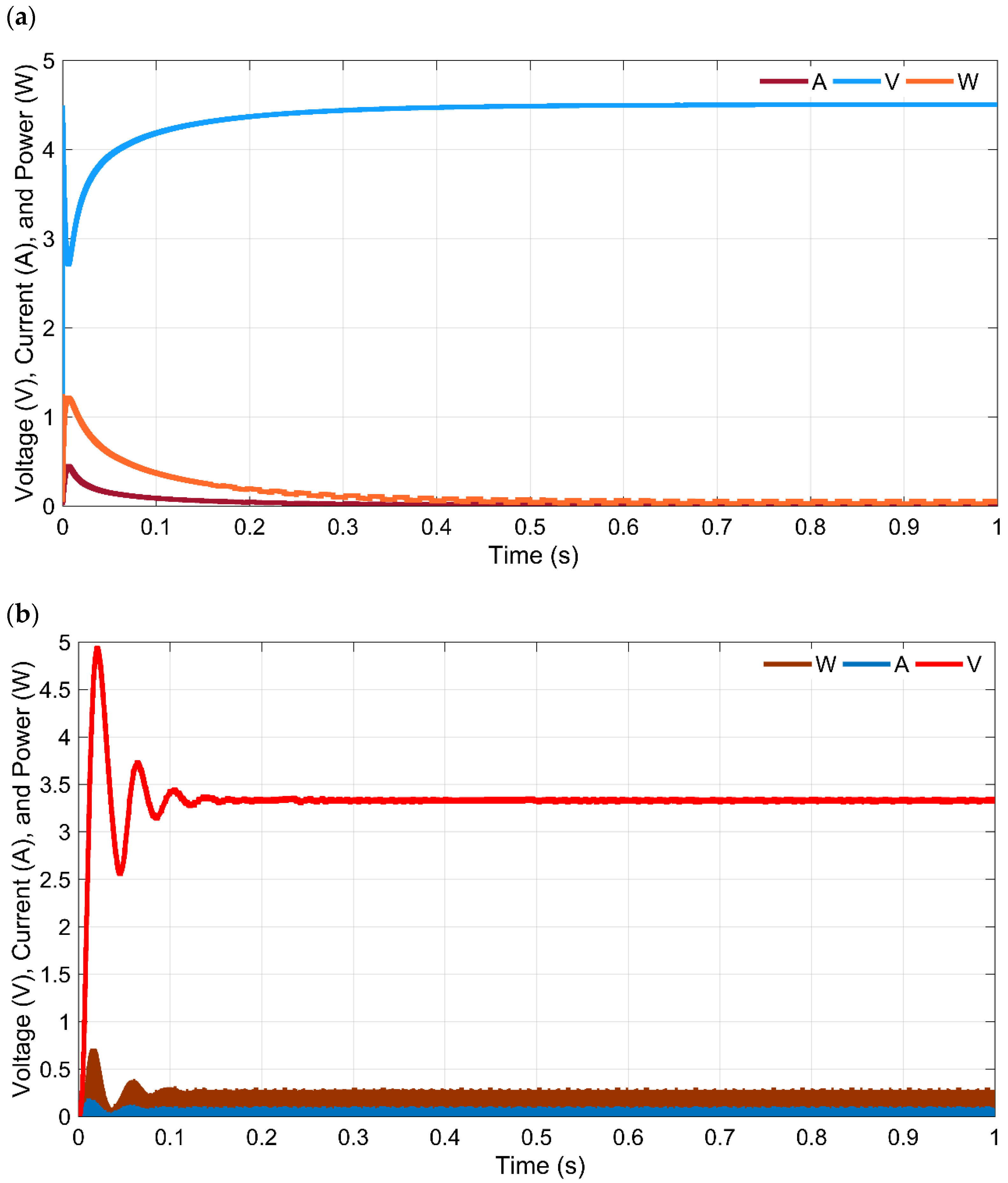
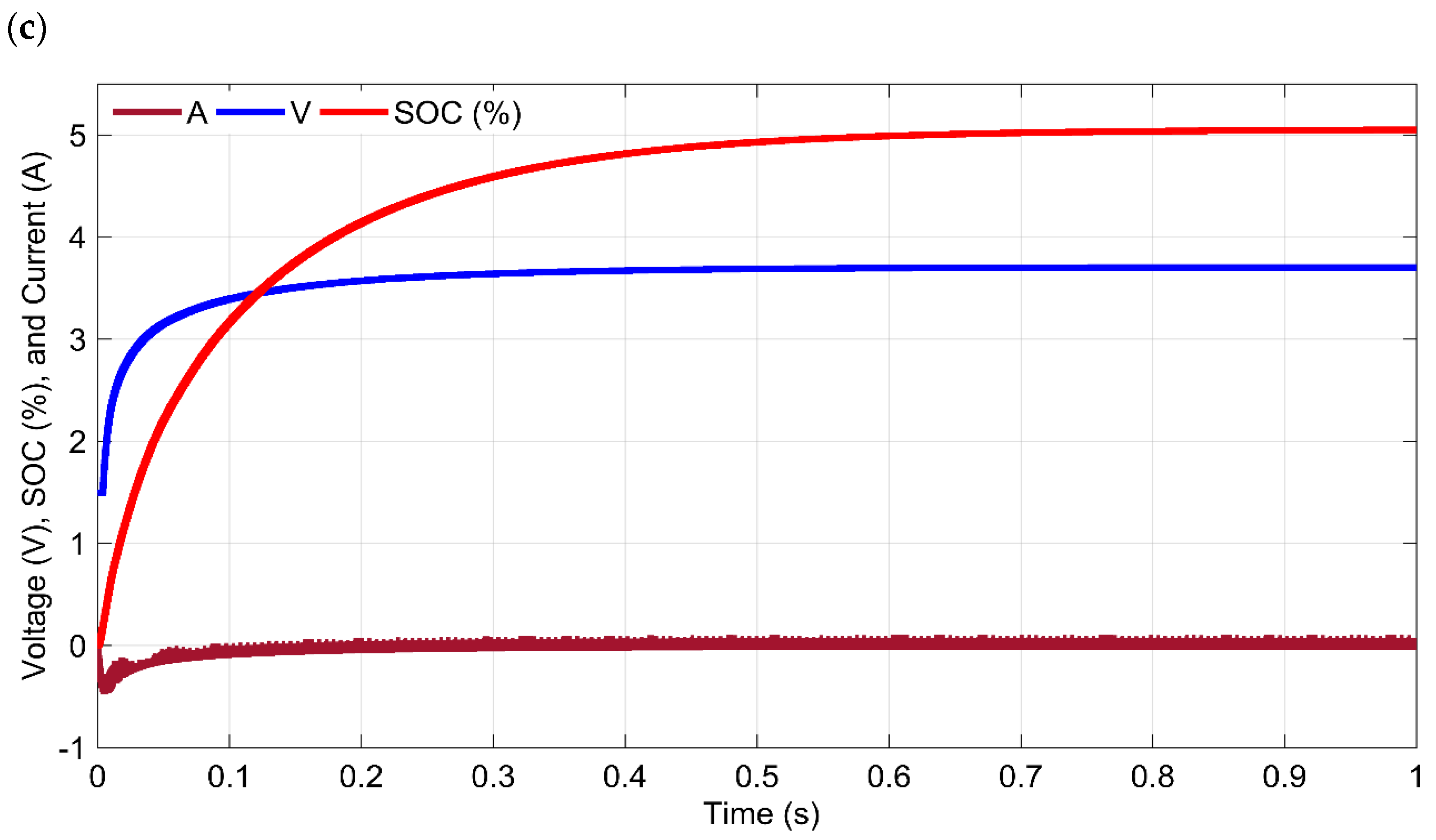
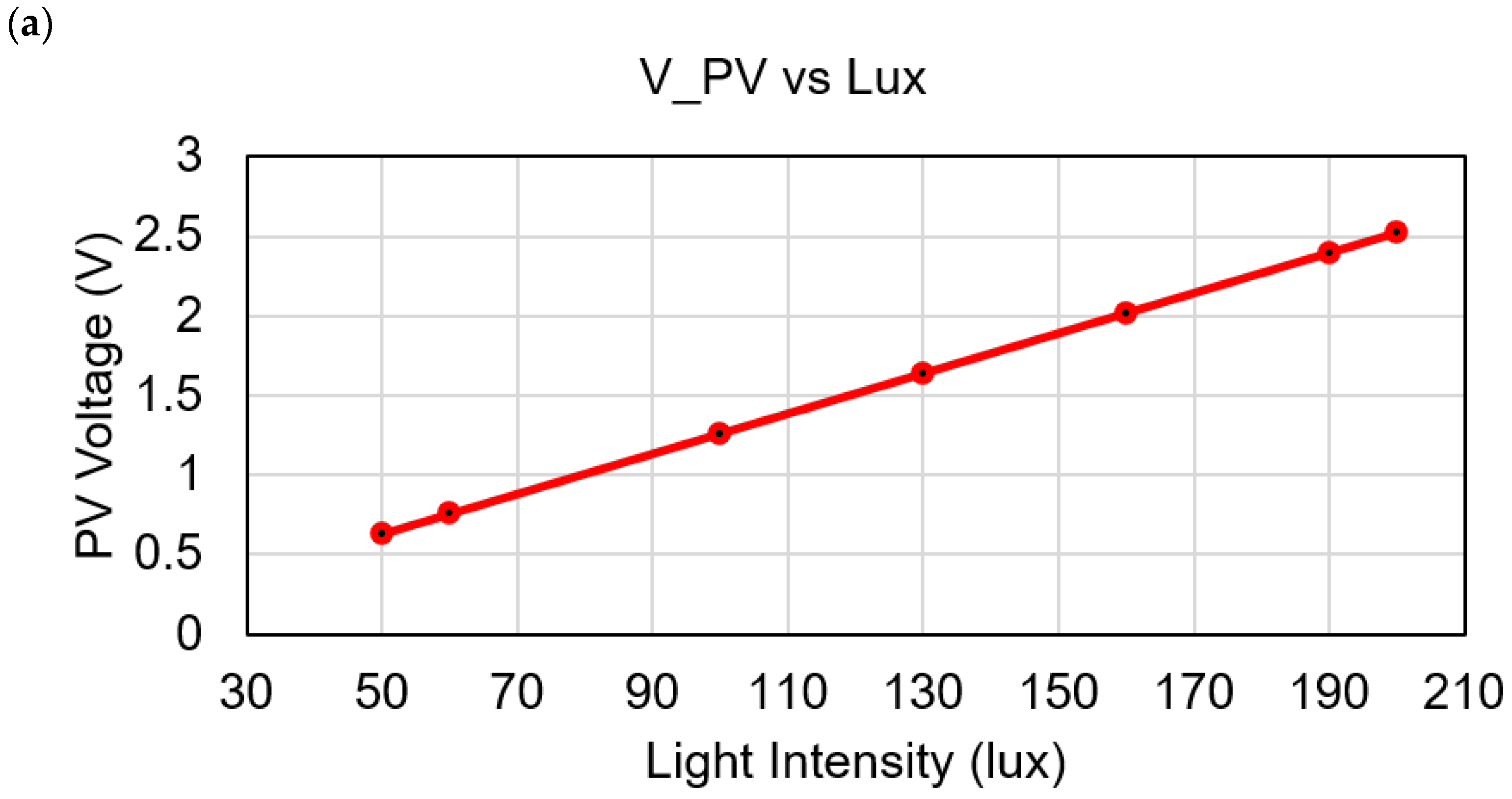
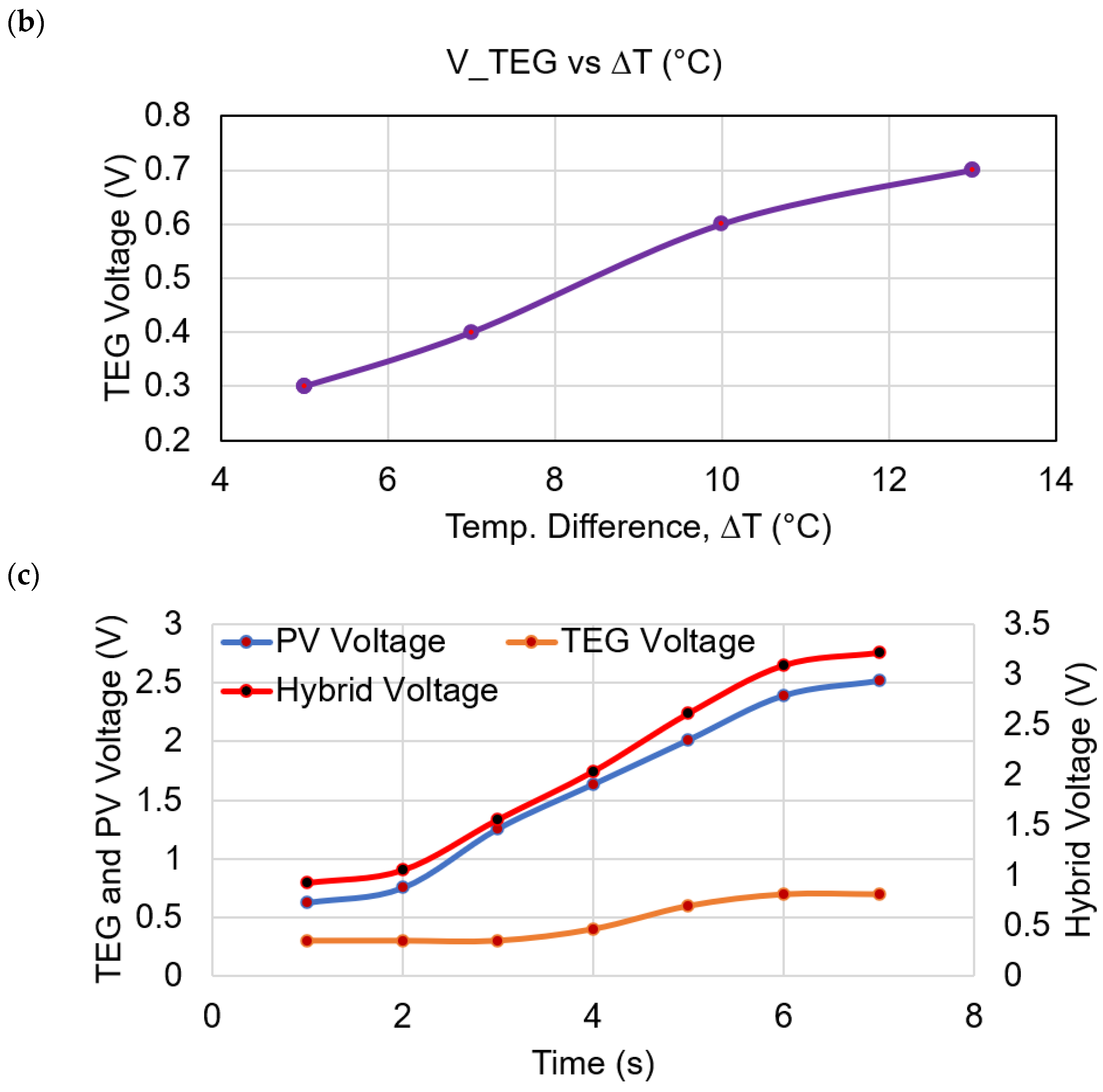
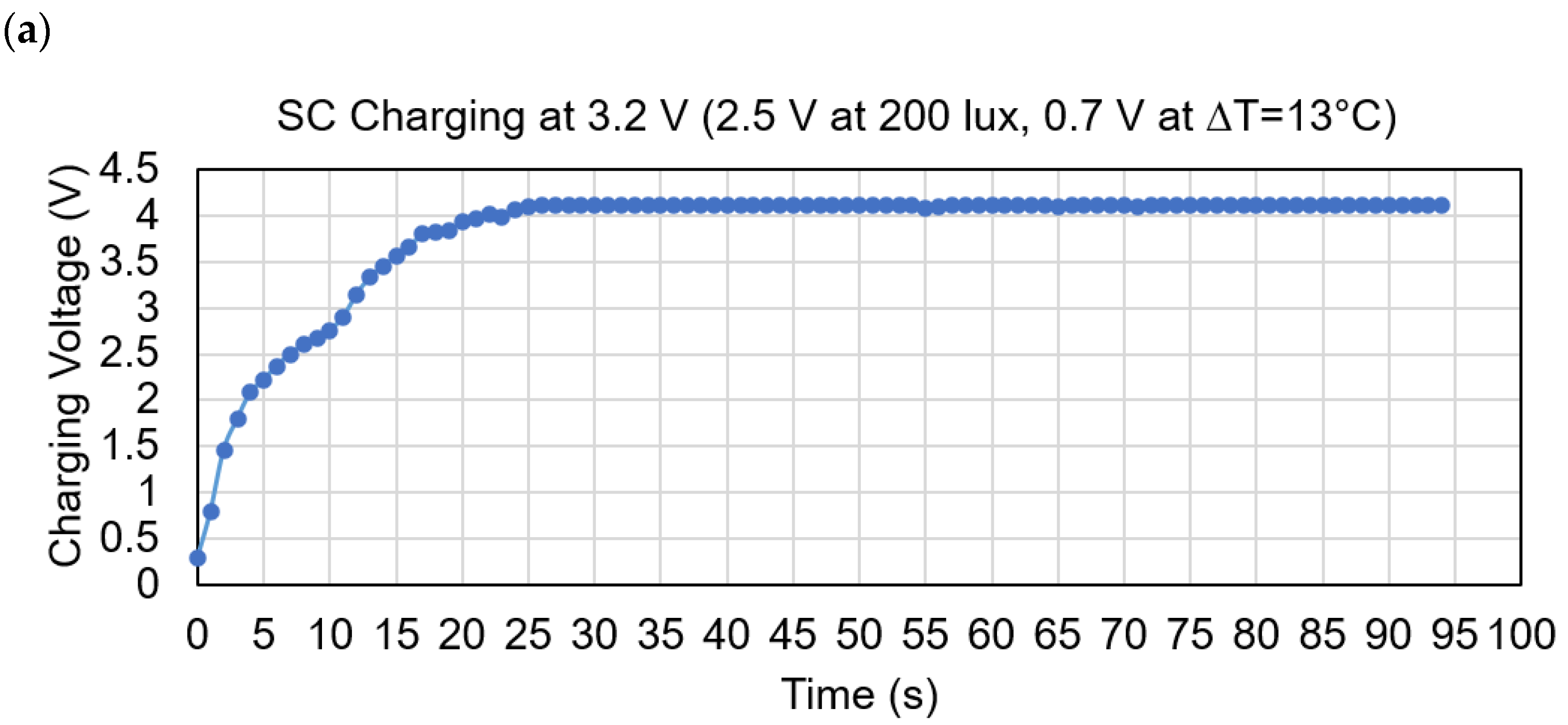

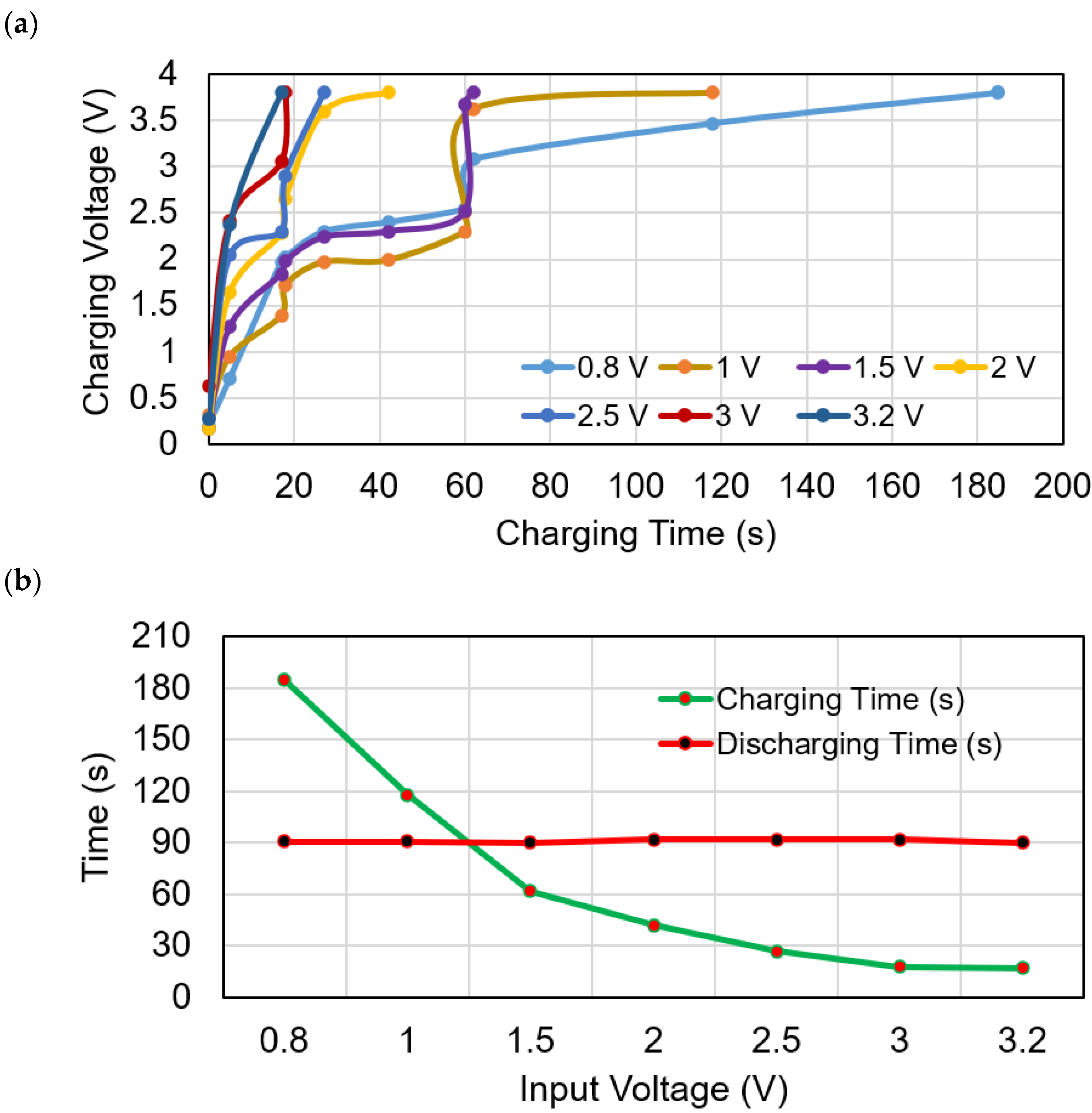
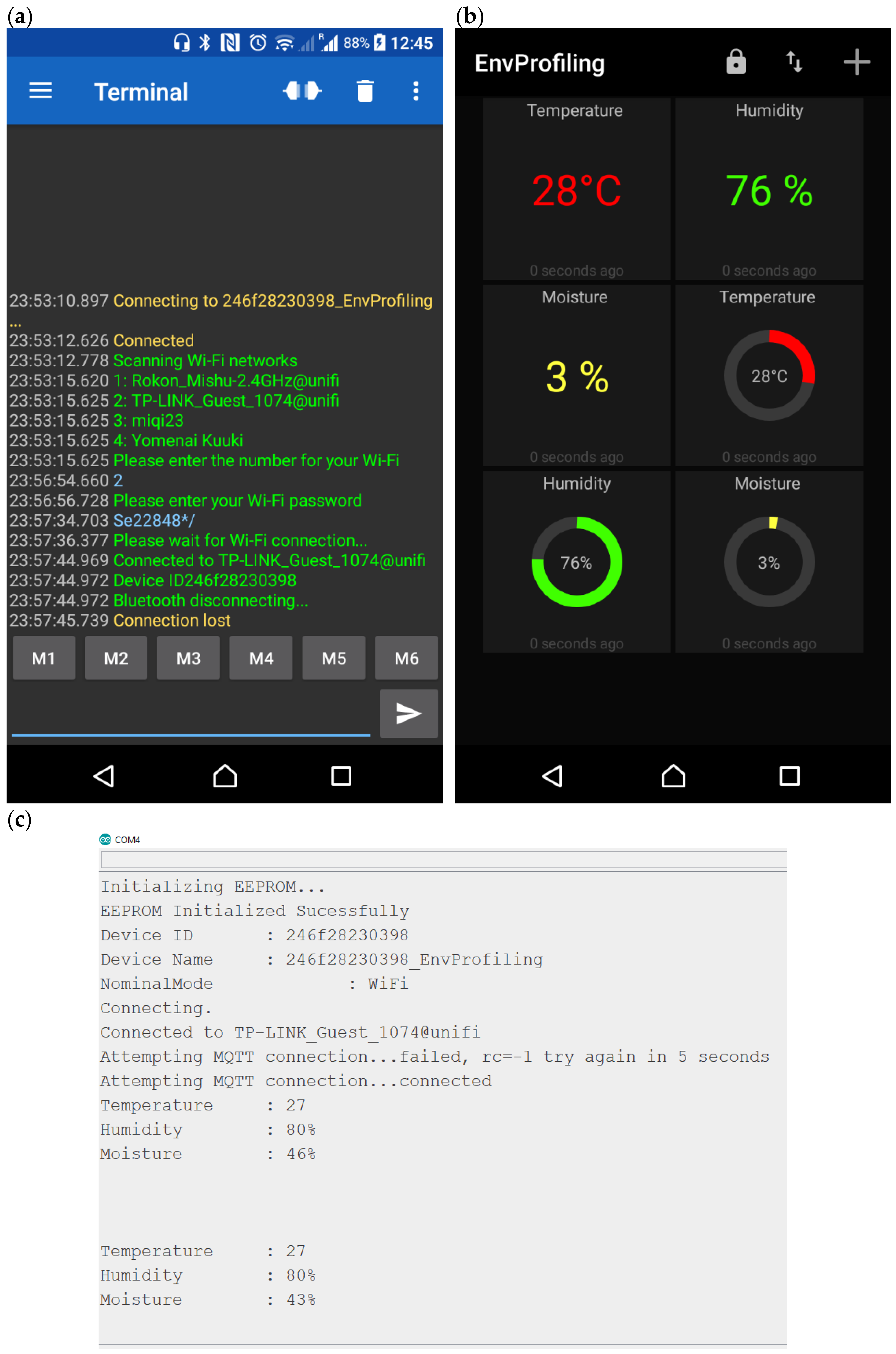
| Ref. | Year | Energy Sources | Input Power | MPPT | Storage |
|---|---|---|---|---|---|
| [15] | 2011 | PV, TEG | 392 µW | Yes | SC |
| [16] | 2011 | PV, Wind | - | Yes | Li-ion |
| [17] | 2011 | PV, PZT, RF | 7.3 mW | No | None |
| [18] | 2012 | PV, TEG, PZT | - | Yes | None |
| [19] | 2014 | PV, PZT | PV-60 mW, PZT-3 mW | Yes | SC, LiPo |
| [20] | 2015 | TEG, PZT | - | No | None |
| [21] | 2015 | PV, TEG, PZT, RF | PV-55 µW, TEG-101 µW, PZT-59 µW | Yes | None |
| [22] | 2016 | PV, PZT, RF | 20 µW | Yes | None |
| Energy Sources | Features | Availability | Observations |
|---|---|---|---|
| Light | A, C, I, P | Indoor/Outdoor | Direct/reflected sunlight, illumination from artificial light |
| Thermal | A, C, I, P | Indoor | Ambient thermal grading between the machine, the human body |
| Wind | A, C, P | Indoor/Outdoor | Air circulations from an electric fan or air conditioner |
| Vibration | A, I, P | Indoor/Outdoor | Human motion, machine vibration |
| Radio Frequency (RF) | A, I, PP | Indoor | Wi-Fi or mobile network |
| Energy Source | Harvesting Device | Power Density | Harvested Power |
|---|---|---|---|
| Indoor Light | Solar PV Panel | 0.1 mW/cm² | 10 µW/cm² |
| Outdoor Light | 100 mW/cm² | 10 mW/cm² | |
| Human Thermal | Thermoelectric Generator | 20 mW/cm² | 30 µW/cm² |
| Industrial Thermal | 100 mW/cm² | 1–10 mW/cm² | |
| Human Vibration | Piezoelectric Device Electrostatic | 0.5 m at 1 Hz 1 m/s² at 50 Hz | 4 µW/cm² |
| Industrial Vibration | Piezoelectric Electromagnetic | 1 m at 5 Hz 10 m/s² at 1 kHz | 100 µW/cm² |
| RF: GSM 900 MHz | Antenna Router | 0.3 µW/cm² | 0.1 µW/cm² |
| RF: Wi-Fi | 0.015 µW/cm² | 0.001 µW/cm² |
| Model No. | Substrate | Fluorescent Light at 200 lux | Dimension W × L × T (mm) | Weight (g) | ||||
|---|---|---|---|---|---|---|---|---|
| Voc (V) | Isc (µA) | Vope (V) | Iope (µA) | No. of Cells | ||||
| AM-1454 | Glass | 2.5 | 35.2 | 1.5 | 33.3 | 4 | 41.6 × 26.3 × 1.1 | 3.0 |
| Parameter | Value |
|---|---|
| Hot surface temperature | 250 °C |
| Cold surface temperature | 30 °C |
| Open circuit voltage | 5.85 V |
| Maximum voltage | 5.3 V |
| Maximum current | 1.1 A |
| Output power | 2.98 W |
| Dimension | 30 × 30 × 3.8 (mm) |
Publisher’s Note: MDPI stays neutral with regard to jurisdictional claims in published maps and institutional affiliations. |
© 2021 by the authors. Licensee MDPI, Basel, Switzerland. This article is an open access article distributed under the terms and conditions of the Creative Commons Attribution (CC BY) license (http://creativecommons.org/licenses/by/4.0/).
Share and Cite
Mishu, M.K.; Rokonuzzaman, M.; Pasupuleti, J.; Shakeri, M.; Rahman, K.S.; Binzaid, S.; Tiong, S.K.; Amin, N. An Adaptive TE-PV Hybrid Energy Harvesting System for Self-Powered IoT Sensor Applications. Sensors 2021, 21, 2604. https://doi.org/10.3390/s21082604
Mishu MK, Rokonuzzaman M, Pasupuleti J, Shakeri M, Rahman KS, Binzaid S, Tiong SK, Amin N. An Adaptive TE-PV Hybrid Energy Harvesting System for Self-Powered IoT Sensor Applications. Sensors. 2021; 21(8):2604. https://doi.org/10.3390/s21082604
Chicago/Turabian StyleMishu, Mahmuda Khatun, Md. Rokonuzzaman, Jagadeesh Pasupuleti, Mohammad Shakeri, Kazi Sajedur Rahman, Shuza Binzaid, Sieh Kiong Tiong, and Nowshad Amin. 2021. "An Adaptive TE-PV Hybrid Energy Harvesting System for Self-Powered IoT Sensor Applications" Sensors 21, no. 8: 2604. https://doi.org/10.3390/s21082604
APA StyleMishu, M. K., Rokonuzzaman, M., Pasupuleti, J., Shakeri, M., Rahman, K. S., Binzaid, S., Tiong, S. K., & Amin, N. (2021). An Adaptive TE-PV Hybrid Energy Harvesting System for Self-Powered IoT Sensor Applications. Sensors, 21(8), 2604. https://doi.org/10.3390/s21082604












